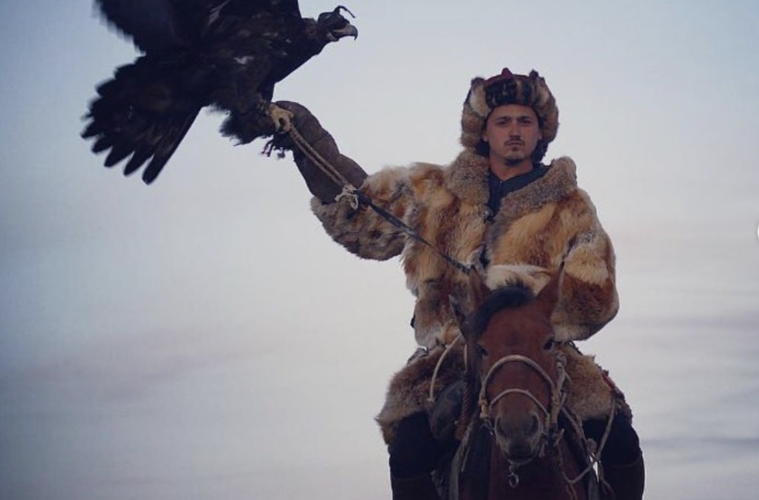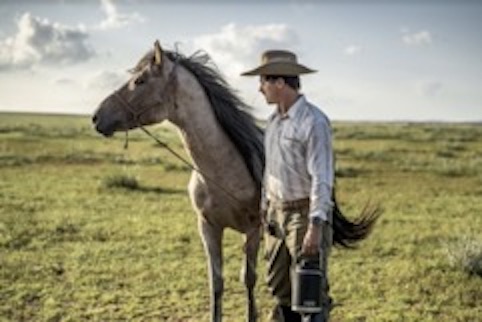Create Your Own Adventure: Freedom and Spirit in Horse Training
Training routines, short-term goals, and a daily commitment to those goals are key to success in equestrian sports. I enjoy the training process and routine that I’ve found with my horses, but can’t help but feel occasionally worn out from the repetition. When I focus so much on the goal I’ve set in front of me, I find myself drifting away from what’s really important (enjoying time with my horses) and lose the creativity that keeps me sharp.
When I find myself getting stuck in a rut, I end up wandering over to Erik Cooper’s Instagram. Erik, who works for the Mongol Derby, lives a fantastically creative and adventurous life. The Mongol Derby is considered to be the longest and toughest horse race in the world. Riders cover 1000km across the Mongolian steppe, changing semi-wild Mongolian horses every 40km – a race that certainly adds excitement and adventure into life! Every time Erik posts a new photo, or we talk about his new ideas and projects, a spark of energy returns to me in my own work, as I imagine new possibilities of adventure with my own horses.
Erik Cooper with a stallion in Mongolia. Photo credit to Sarah Farnsworth.
I called Erik the other night to dive into opportunities to infuse adventure into my own day to day riding. As we were discussing his life in Mongolia, and the horses with which he works, the words “freedom” and “spirit” were core to our conversation. This freedom and spirit – the liveliness of the horse – is needed for survival. As we explore within our own training, keeping this life and spark of the horse in mind is important to keep the horse truly part of our training. In what ways can I add this freedom and spirit into my work here, without booking the first flight to Mongolia?
In Erik’s work with horses in the context of adventure travel, you’re forced to get back to the basics. Oftentimes in his work, Erik asks “Who is this horse? What makes them tick?” while realizing “This work isn’t about a perfect position, or flawless technique, but it’s about connecting with the foundation of a horse… Just like humans, horses have their own personalities, flaws and color. Oftentimes we try to correct aspects of an individual to fit a certain mold for the event we are pursuing – we need to be careful that [those modifications do not damage] the spirit [of the horse]”.
Through spending so much time with an unknown horse and dealing with unexpected challenges (such as wildlife encounters and variable weather) throughout his adventures in Mongolia, Erik understands the importance of really getting to know your horse to best take care of them as your partner.
Additionally, as many of the horses could be considered semi-wild, Erik acknowledges that pursuing a horse adventure can really strip horsemanship down to the basics. Solidifying basics in this way is central to success in any equestrian endeavour, so much so that Erik suggests working with a horse that’s relatively unhandled in order to shed light on the basics of equine behavior – insight that’s important for riders at all levels of horsemanship and sport. Not only do you need to cover basics, like providing the horse with food and water, but you need to gain an awareness of the horse’s likes, dislikes, fears, and strengths – all while navigating “your own primal side and [heightening] your own sense of survival and the reactions necessary for it”.
Pushing yourself and your partnership with your horse takes you back to the basics. Photo credit to Breanna Wilson.
If you aren’t ready to jump into a horse adventure as intense as the ones Erik leads in Mongolia, there are other ways to connect with the same freedom, spirit, and foundation with your horse.
Find opportunities to work with something a little wild: if you start a horse, Erik is confident that you’ll grow in your ability to understand the “psyche of the horse”. Even if you aren’t in a position to start a horse from the beginning, or by yourself, observing equine behavior without much human influence is very telling. How do they react to new questions? How do they express themselves? How do they interact with other horses? Understanding answers to these questions will help you know how to best communicate with your horse.
Additionally, stepping outside of your comfort zone to have fun with your horse and try something new (safely) is easily controllable so you can set your own pace. For riders not ready or able to commit to a horse adventure such as the Mongol Derby, Erik suggests exploring different training techniques or cultures with horses, bareback riding, or long distance endurance or trail rides as just a few options that can be tailored to you and your horse.
I love the work that I do with my horses, as I’m sure you all do too. However, keeping an open mind and a free spirit will encourage you to always ask how to improve and diversify your horsemanship, helping you strengthen your relationship with your horse while sparking excitement, exploration, and adventure!
Thank you to Erik for sharing some advice and suggestions, as well as inspiring riders like me to get out of the ring! If you’re ready to get out of the ring and head all the way to Mongolia, check out the Mongol Derby’s website for more information.
First image photo credit: Erik Cooper



